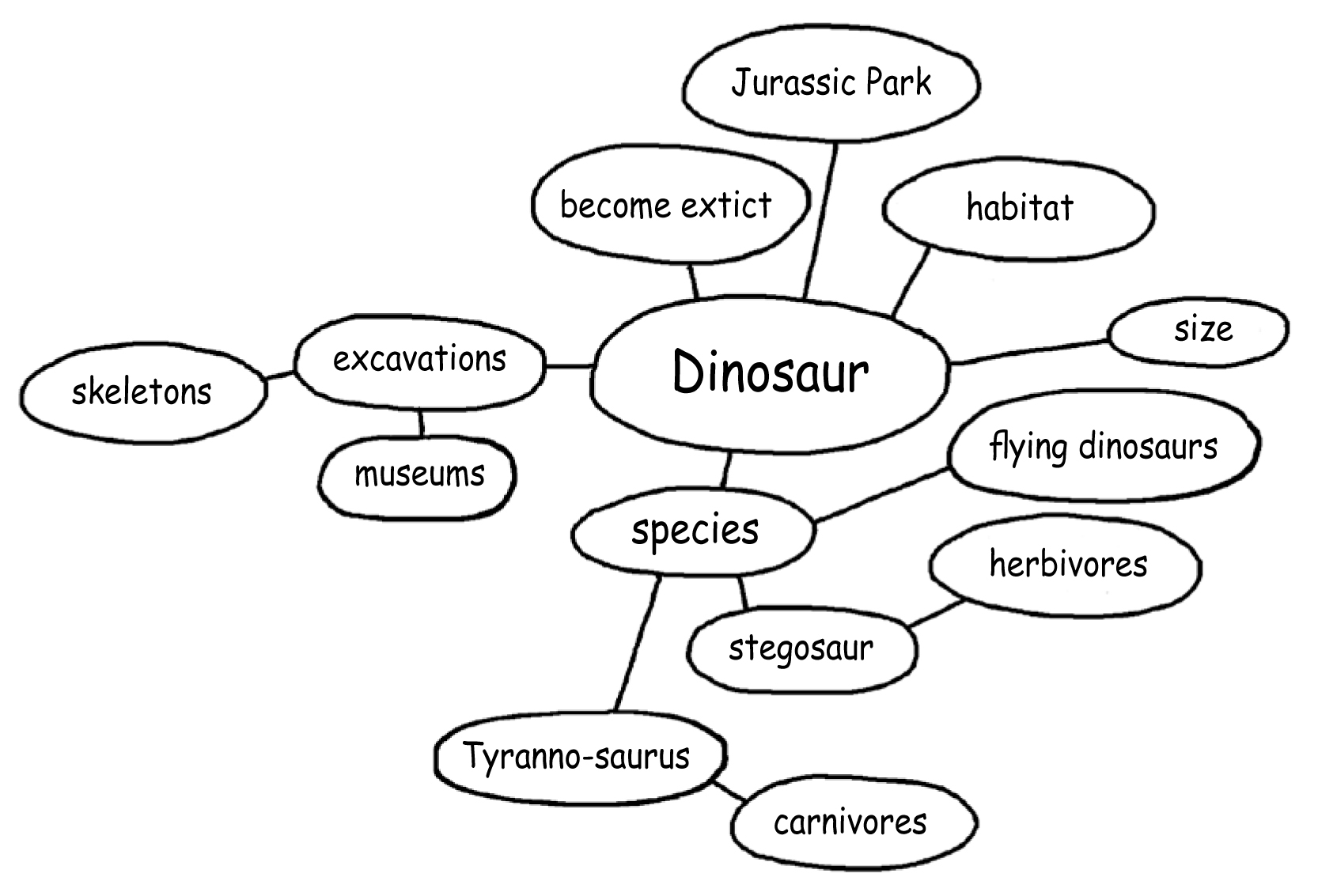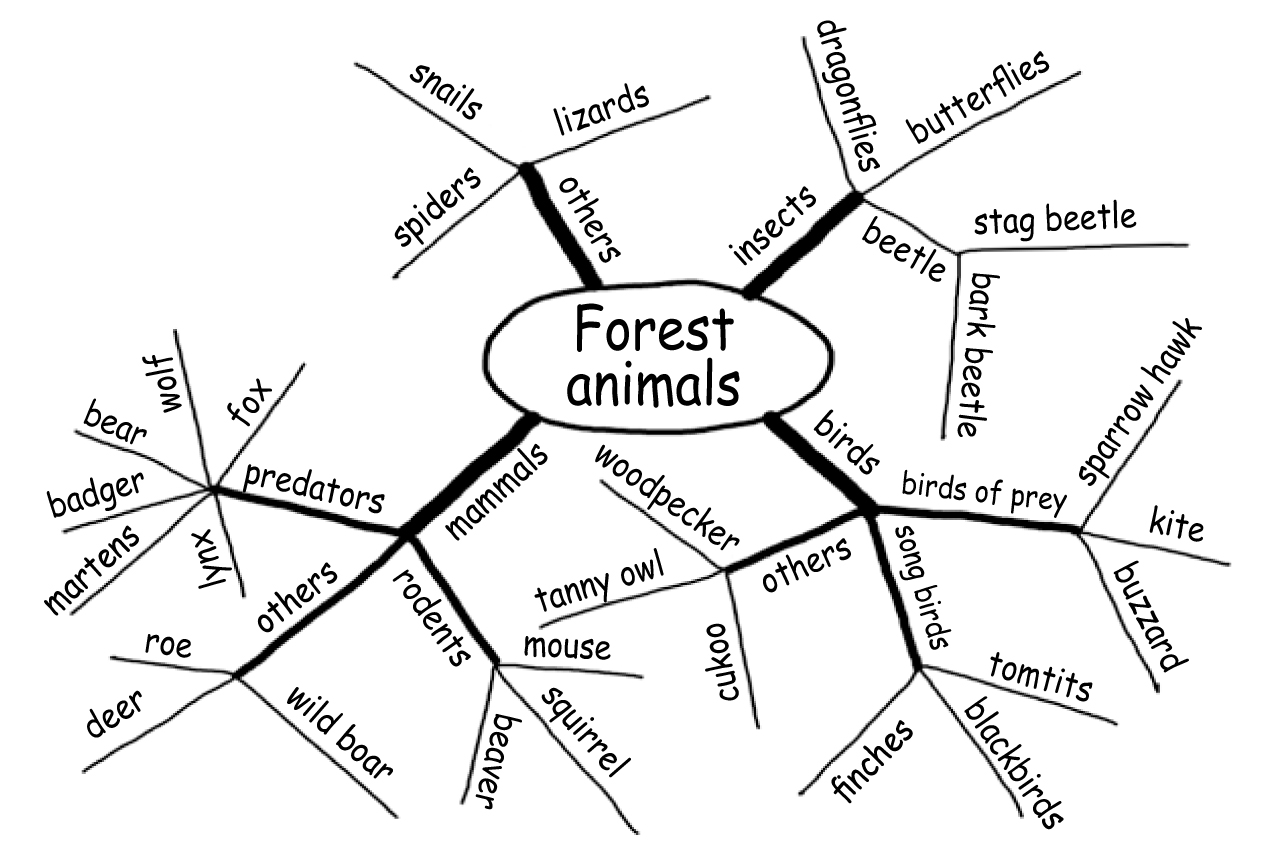11.1
The Cluster-Method
Cluster signifies a group (of ideas). This technique gives free reign to your fantasy and your associations. It helps you collect ideas in a creative way and to determine a course of activity.
This is how you create a cluster:
- Place a sheet of paper (A4 or larger, landscape format) in front of you.
In the center write in large letters the appropriate theme or keyword (e. g. «homesickness», «discrimination», «dinosaur»). Circle these words. - Now write around this word in keywords everything that comes to mind (all your associations, ideas, thoughts). Circle these words as well and connect them with the keyword in the center.
- You can write new words around each circled word and circle them as well. This way a whole network of ideas and associations emerges in the end.

And so forth from the cluster to the text:
- Take time to consider your cluster.
- Then, think about which circled terms are connected in a way that would serve as the foundation of a text (essay, report, presentation). With another color, trace these connections or thought processes. Perhaps you will need several colors for different parts. Moreover, you may need to add different circles or connections for them.
- Continue working this way until you get a more or less clear idea how your text could be constructed. Use numbers to mark the sequence of thoughts, if this helps you.
- Now begin writing it down. Good luck!
11.2
The mind map method
A mind map signifies a map of thoughts. This technique is particularly useful if you have to create a factual text or a presentation whereby the structure and the development is important from the very beginning.
This is how you create a mind map:
- Place a sheet of paper (A4 or larger, landscape format) in front of you . Write in the center in large letters the appropriate theme or keyword (e. g. «nuclear energy, yes or no», «the history of Serbia»). Circle this word or these words.
- Draw a few main branches (thick lines) from this keyword for the most important partial areas or aspects of your theme. Label these main branches. (Example for nuclear energy: risks/usage/comparison with other sources of energy.)
- The main branches can branch into smaller, arterial branches.
- The arterial branches can also branch out further into even smaller branches.

And it continues like this:
- Take time to consider your mind map, and consider if anything important is missing. The mind map is finished (and a success) if it provides you with an overview of your topic, just like a map does.
- Depending on its intended use, it may be worthwhile to further elaborate the mind map (e. g. if you use it in preparation of a text or a presentation):
- Use different colors and arrows to mark things that belong together.
- Number the main and arterial branches according to how you are going to describe them later.
- Perhaps use symbols; e.g. in order to mark things that you are going to illustrate with pictures in the presentation.
- Then continue with the next steps of your work.
11.3
The little paper method
Cut out about 20 small paper strips and place them in front of you. Close your eyes until a thought about your topic occurs to you, then write it on the little paper. Each idea is written on a different paper. It may take a little while, or you may have to walk a few steps around the room until you have gathered a few thoughts about your topic. Once you have collected about 10–15 paper strips, put those together that fit and might be used for a text. Move the papers about and add different ones until you are more or less able to approximately imagine the text.






